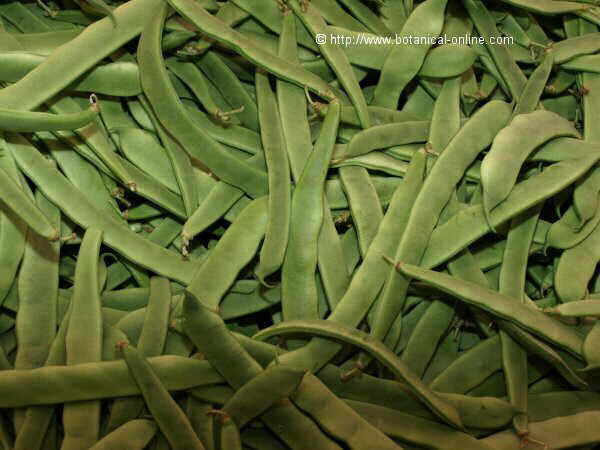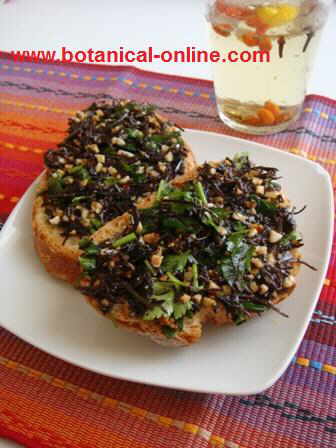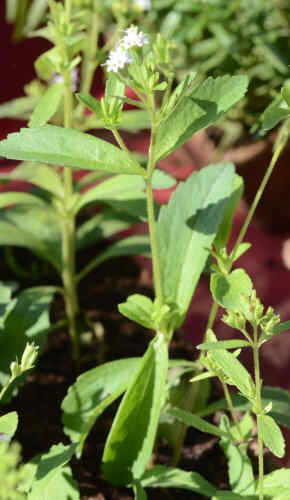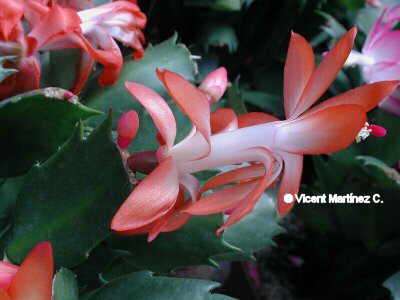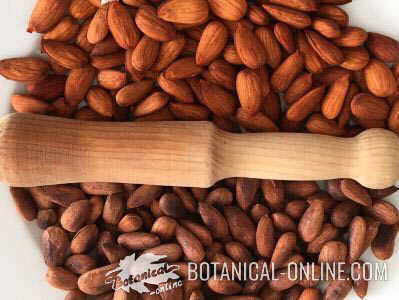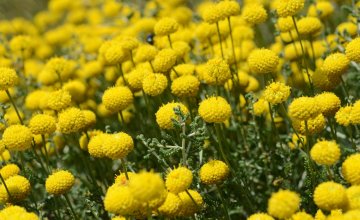Contents
PRICKLY PEAR FRUIT
Prickly pear, the prickly fruit
The prickly pear fruit is called cactus fruit, cactus pear, prickly pear, Indian fig, cactus fig or tuna.
It is the fruit of a cactus plant native to Mexico that is currently found wild throughout the Mediterranean basin.
The plant (Opuntia ficus-indica) that produces these fruits is called cactus, prickly pear, nopal, etc, It is a very common shrub in rural areas, gardens and orchards.
*Additional characteristics of prickly pear in the listing below.
The prickly pears fruits have ellipsoidal shape, a thick skin, and are covered with tiny barbs that stick easily to our hands, if we manipulate them unprotected.
There are many varieties of cactus pears, which may be of different colors: yellow, red, purple or green.
Nopal is eaten without skin, raw or cooked. The fruit pulp is fleshy, sweet and jelly-like. Inside, it contains numerous tiny seeds, which are eaten along with the pulp.
Prickly pear young stems, called “nopalitos” or nopales, are also consumed.
*More information: see Nopalito nutritional value
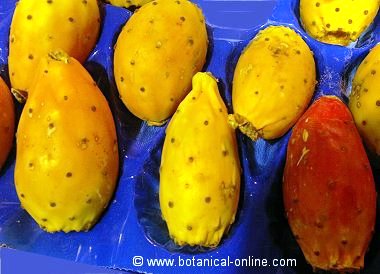
In the image: cactus fruits
Nutritional properties of prickly pear
Prickly pear fruit gives us low calories, healthy fiber and natural antioxidants.
Native to coastal areas, in the eighteenth century, it became very popular with boaters as antiscorbutic food (source of vitamin C) and for hydration purposes.
Indeed, prickly pear is an excellent source of natural antioxidants, such as vitamin C, beta carotene and tocopherol. (From here)
The caloric value of this foot ranges from 30-50kcal. per 100g., as it gives us the apple or pear. However, it contains about 30mg. vitamin C, than an input of the fruits mentioned.
Nutritionally, this fruit has a balanced content in sugars, among which the fructose, glucose, galactose and sucrose. Combat fatigue, is easily digestible
Prickly pear also plays an important role in the diet for diabetes. Scientific studies have shown that this fruit has slight hypoglycemic effect, helping to regulate blood sugar in people with type II diabetes.
The whole plant is rich in soluble fiber (pectin and mucilage), which gives the pulp a gelatinous texture. This type of fiber is very healthy, with a satiating effect which helps regulate bowel movements, constipation and combat cholesterol.
Its benefits also include the provision of healthy flavonoids, among which quercetin and rutin. These substances work together to maintain the health of the arteries and heart.
Because of its low fat intake, this fruit is suitable for liver and diets for weight loss.
What are the main uses of prickly pear?
These are the main uses of prickly pear nowadays:
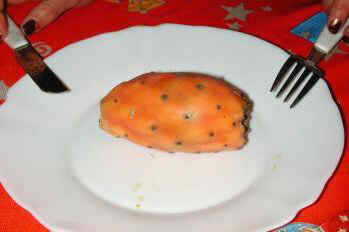
Prickly pear fruit. See how to peel it without pricking yourself
Edible uses of prickly pear
– Food products:the fruit, known as prickly pear or cactus fruit is edible and it is used as food. From this derives other food like tuna cheese. With the fruit of the nopal we can elaborate jams, jellies, nectar, etc.. It can also be dried and consumed as dried fruit. Consumed as a vegetable, is adequate in many diets. (More information about the nutritional value of this cactus.)
– Young pads: young succulent stems, called nopales, are consumed as a vegetable food. In very dry climates, the parenchyma of the cladodes (“pulp” of the cactus) is an excellent source of hydration. The gelatinous interior is rich in mucilage and cellulose, which gives emollient properties suitable for treating bruises and wounds.
– Alcohol: the fruits are used in producing liquor and spirits.
– Forage plant: All parts of the plant are edible. They are a good food for animals (pigs, cows, sheep and goats) especially in arid or semi-arid places where no other forage is available.
*Related information: Prickly pear composition
Medicinal uses of prickly pear
This cactus is used for medicinal purposes to treat diabetes and cholesterol, because it contains saponins. The fruit is considered by folk medicine as an astringent, and consumed as antidiarrheal.
The blades are used as emollient and fresh. The pharmaceutical industry uses the mucilage content inside the pads to produce gastric protectors and capsules. (More information on the properties of prickly pear in the listing below)
Industrial or agricultural uses of prickly pear
– Soil conservation in arid places: Pear fig tree is planted to protect the soil from wind erosion and prevent desertification in areas with extreme climates drought and low humidity.
– Whole plant: Used to make fences. To this end, a variety of prickly cactus plant is used to land in orchards, forming a natural barrier.
– Substrate for cochineal production: the plant receives great interest to produce cochineal (Dactylopus coccus). The typical Cochineal is a pest on plants but it is used in food and textile industry to produce a red colorant. In the Canary Islands this crop is important.
– Cosmetic purposes: different marketed cosmetic products are made from prickly pear: soaps, shampoos, masks, gel, etc..
– Manufacture of plastic: Recently a proposal was submitted to produce a material that has been called “bioplastics” from the mucilage fiber extracted from prickly pear. However, this is still a research field.
– Adobe for building: the parenchyma of the cactus paddles mixed with concrete, making this a novel technique of biobuilding. This reduces the production costs of concrete, as it avoids the use of costly additives. Cactus extract increases the compressive strength and reduces permeability of the mixture. The idea was developed by a researcher at the National Polytechnic Institute of Mexico.
![]() More information about prickly pear
More information about prickly pear

